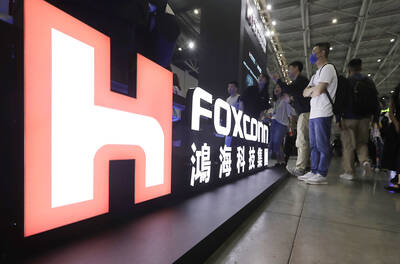World finance chiefs yesterday warned that runaway oil prices could imperil global economic growth, calling on producers to open the taps and for a probe into market swings.
High oil and food prices pose “a serious challenge to stable growth worldwide” and may worsen poverty and stoke global inflation, G8 finance ministers warned after two days of talks here.
The G8 — Britain, Canada, France, Germany, Italy, Japan, Russia and the US — urged “oil-producing countries to increase production and to invest to enhance long-term production capacity.”
Speculators were also in the spotlight with the G8 tasking the IMF to lead a probe into the recent spike in crude oil prices.
The G8 said greater transparency in the oil market and more reliable data were needed, including on “the size of financial flow coming” into it.
But US Treasury Secretary Henry Paulson insisted speculators were not to blame for the fivefold jump in oil prices since 2003.
“All the evidence” points to tight supply and strong demand as the main cause, he told a press conference.
“In the world today,” he added, “what people want to do is look to simple short-term solutions. I think there’s a danger that if people say ‘all this is speculators’ then we won’t do what we need to do. We don’t want to misdiagnose the problem.”
World oil prices have been on a rollercoaster ride recently, soaring close to US$140 a barrel on worries about tight supplies, with some blaming market speculators for aggravating the wild swings.
Currencies were also a hot topic at the G8 meeting amid signs of growing concern in Washington about the weakness of the dollar, although with central bank chiefs absent, they were not mentioned in the G8 statement.
Paulson reiterated Washington’s long-standing policy that “a strong dollar is in our nation’s interest” saying his country’s solid economic fundamentals would support the currency in the long term.
Traders say that Washington appears to have been ratcheting up the rhetoric recently to talk up the US currency so as to keep a lid on inflation and limit the need for interest rate hikes that could stifle economic growth.
“Our economy is going through a tough period right now but we’ve got strong long-term fundamentals. I believe that those fundamentals will be reflected in the currency,” Paulson said.
There has been speculation among currency traders that the G8 may consider a foray onto the market to prop up the dollar if it comes under renewed selling pressure, although Paulson sidestepped a question about intervention.
Analysts say that a weaker US dollar has contributed to higher oil prices, but Paulson said oil prices had “gone up dramatically in every currency.”
The higher cost of fuel has led to protests worldwide, ranging from tens of thousands of truck drivers striking in Spain and Portugal, to street rallies throughout Asia over hikes in subsidized energy prices.
Protests over food prices meanwhile have included riots in Egypt, Haiti and other nations.
The G8 said it expected that food demand “will stay high as emerging economies and developing countries grow.”
The ministers called for emergency assistance for poor countries, efforts to improve food supply and for an end to export restrictions and food subsidies.
The G8 also recognized the benefits of government-controlled sovereign wealth funds. It encouraged the funds to work with the IMF to improve transparency.

A proposed 100 percent tariff on chip imports announced by US President Donald Trump could shift more of Taiwan’s semiconductor production overseas, a Taiwan Institute of Economic Research (TIER) researcher said yesterday. Trump’s tariff policy will accelerate the global semiconductor industry’s pace to establish roots in the US, leading to higher supply chain costs and ultimately raising prices of consumer electronics and creating uncertainty for future market demand, Arisa Liu (劉佩真) at the institute’s Taiwan Industry Economics Database said in a telephone interview. Trump’s move signals his intention to "restore the glory of the US semiconductor industry," Liu noted, saying that

On Ireland’s blustery western seaboard, researchers are gleefully flying giant kites — not for fun, but in the hope of generating renewable electricity and sparking a “revolution” in wind energy. “We use a kite to capture the wind and a generator at the bottom of it that captures the power,” said Padraic Doherty of Kitepower, the Dutch firm behind the venture. At its test site in operation since September 2023 near the small town of Bangor Erris, the team transports the vast 60-square-meter kite from a hangar across the lunar-like bogland to a generator. The kite is then attached by a

Foxconn Technology Co (鴻準精密), a metal casing supplier owned by Hon Hai Precision Industry Co (鴻海精密), yesterday announced plans to invest US$1 billion in the US over the next decade as part of its business transformation strategy. The Apple Inc supplier said in a statement that its board approved the investment on Thursday, as part of a transformation strategy focused on precision mold development, smart manufacturing, robotics and advanced automation. The strategy would have a strong emphasis on artificial intelligence (AI), the company added. The company said it aims to build a flexible, intelligent production ecosystem to boost competitiveness and sustainability. Foxconn

STILL UNCLEAR: Several aspects of the policy still need to be clarified, such as whether the exemptions would expand to related products, PwC Taiwan warned The TAIEX surged yesterday, led by gains in Taiwan Semiconductor Manufacturing Co (TSMC, 台積電), after US President Donald Trump announced a sweeping 100 percent tariff on imported semiconductors — while exempting companies operating or building plants in the US, which includes TSMC. The benchmark index jumped 556.41 points, or 2.37 percent, to close at 24,003.77, breaching the 24,000-point level and hitting its highest close this year, Taiwan Stock Exchange (TWSE) data showed. TSMC rose NT$55, or 4.89 percent, to close at a record NT$1,180, as the company is already investing heavily in a multibillion-dollar plant in Arizona that led investors to assume